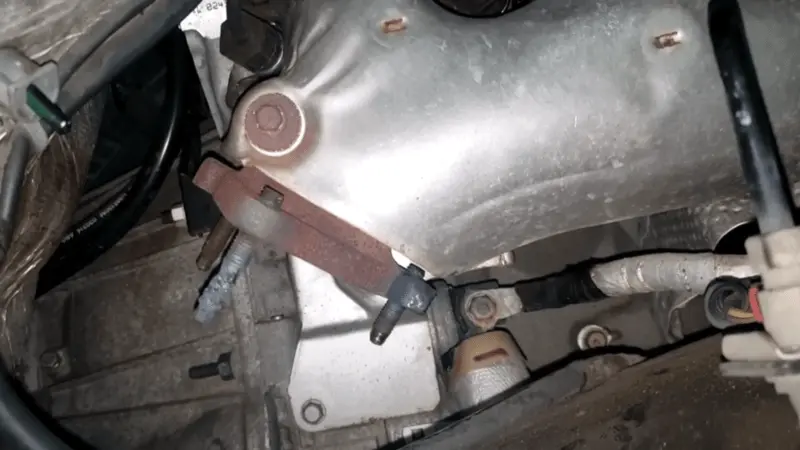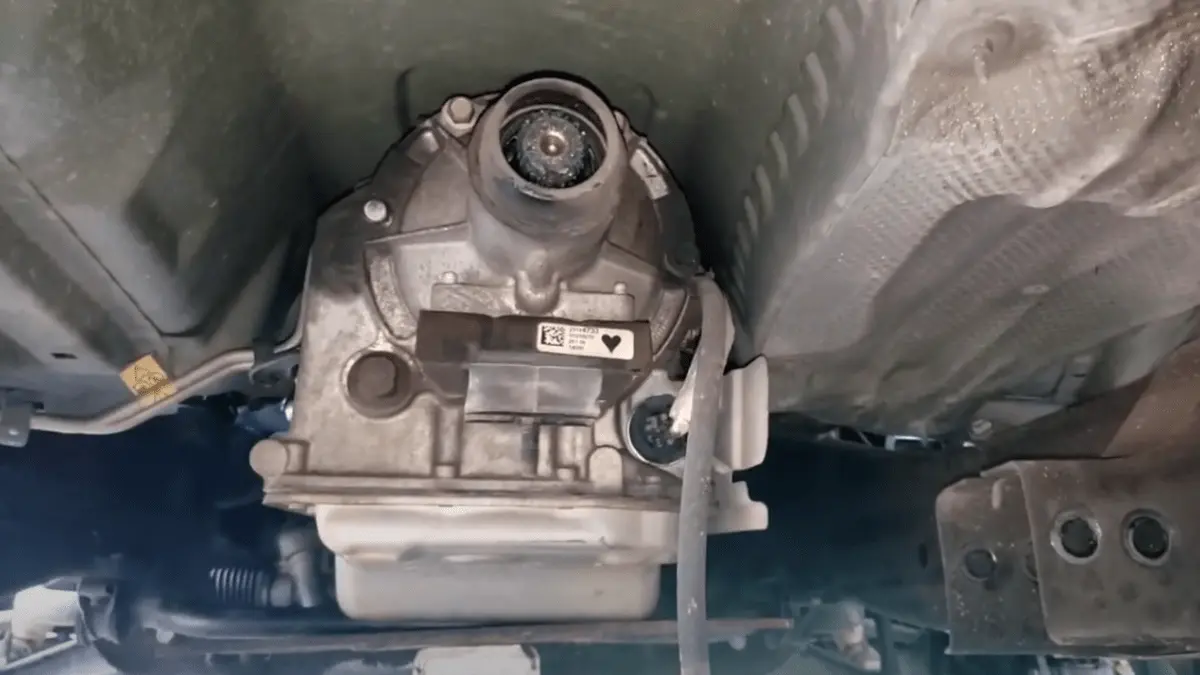The 2014 Chevrolet Silverado 1500 is a trusted workhorse known for its performance and durability. However, like any vehicle, it’s not immune to issues, and one area of concern for many owners has been transmission problems. But what are the 2014 Silverado transmission problems?
The 2014 Silverado 1500 has experienced common transmission issues, including delayed or hard shifting, shaking during acceleration, unusual noises, burning odors, and fluid leaks. These problems can impact performance and reliability, making early detection and maintenance crucial to prevent further damage.
In this article, we’ll delve into the common transmission problems that have been reported in the 2014 Silverado and explore their implications.
7 2014 Silverado Transmission Problems & Solutions

The transmission in your 2014 Chevrolet Silverado 1500 is a vital component responsible for delivering the right amount of power to your wheels, enabling you to control your vehicle’s speed effectively. However, when transmission issues arise, they can significantly impact your truck’s performance. In this article, we’ll explore five common transmission problems in the 2014 Silverado 1500 and discuss their implications, symptoms, and potential solutions.
1. Delayed or Sluggish Shifting:
Symptoms: Delayed shifting occurs when the transmission takes longer than usual to change gears, making your Silverado feel less responsive. You may notice a hesitation or sluggishness when accelerating.
Implications: Delayed shifting can lead to a decrease in overall performance, reduced fuel efficiency, and increased wear and tear on the transmission components.
Solutions: Consult a professional mechanic to diagnose the issue. Solutions may involve
- checking and adjusting the transmission fluid levels,
- addressing clutch or solenoid problems, or
- conducting a full transmission service.
2. Shaking During Acceleration:
Symptoms: Your Silverado might exhibit noticeable shaking or vibrating sensations when you accelerate, particularly when shifting gears.
Implications: Shaking during acceleration can indicate problems with the torque converter, drive shaft, or worn-out transmission mounts. Ignoring this issue can lead to more severe drivability problems.
Solutions: Seek a mechanic’s expertise to identify the source of the problem. Possible solutions may include repairing or replacing damaged components or addressing balance issues in the drivetrain.
3. Unusual Noises:
Symptoms: Unusual noises, such as buzzing, whining, or clunking sounds, may emerge from the transmission area when your vehicle is in motion.
Implications: These noises could be a sign of internal transmission problems, worn-out gears, or damaged components.
Solutions: A professional diagnosis is essential to pinpoint the issue. Depending on the cause, solutions may range from simple adjustments to more extensive transmission repairs.
4. Burning Odor:
Symptoms: A burning odor, akin to overheated or burnt oil, can sometimes be detected when the transmission is running, and this smell may be accompanied by noticeable heat from the transmission area.
Implications: Overheating can lead to the breakdown of transmission fluid and damage to transmission components.
Solutions: Examine the transmission cooling system to ensure it is functioning correctly. Address any clogs or malfunctions in the cooling system, and consider changing the transmission fluid and filter to prevent further overheating.
5. Fluid Leaks:
Symptoms: Visible fluid leaks beneath your parked Silverado are a telltale sign of a problem. Transmission fluid leaks may appear red or brownish.
Implications: Low fluid levels can lead to overheating and result in premature wear and damage to transmission components.
Solutions: Identifying the source of the leak is crucial. Damaged gaskets, seals, or transmission lines may be the culprits. Seek professional assistance to repair or replace the faulty components and prevent further fluid loss.
6. Gear Slippage:
Symptoms: Gear slippage is characterized by the sudden and unexpected shifting of gears without driver input. You may experience your Silverado momentarily losing power or acceleration.
Implications: Gear slippage can result from a variety of issues, such as worn-out clutch plates, low transmission fluid levels, or a malfunctioning torque converter. Prolonged driving with this problem can cause further damage to the transmission.
Solutions: It’s crucial to have a mechanic diagnose the problem. Solutions may include repairing or replacing worn clutch components, adjusting fluid levels, or addressing torque converter issues.
7. Warning Lights on the Dashboard:
Symptoms: If your 2014 Silverado’s onboard diagnostics system detects a transmission problem, it can trigger warning lights on the dashboard, such as “Check Engine” or “Transmission.”
Implications: Dashboard warning lights indicate that the vehicle’s computer has identified an issue within the transmission system. Ignoring these warnings can lead to more severe transmission problems.
Solutions: Consult a professional mechanic to perform a diagnostic scan of your vehicle. This scan will provide specific error codes that can guide the repair process. Following the recommended repairs and addressing the source of the issue is crucial to maintaining your Silverado’s performance.
RELATED: How To Fix 2017 Silverado Transmission Problems
How Will You Notify A Bad Chevy Silverado Transmission?
Recognizing a problematic Chevrolet Silverado transmission is essential for timely intervention and preventing further damage. Here’s how you can notify a bad Chevy Silverado Transmission:
1. Pay Attention to Transmission Fluid: Regularly check the transmission fluid’s color and level. Healthy transmission fluid is typically reddish and clean. If it’s dark, burnt, or low, this could indicate problems within the transmission.
2. Listen for Unusual Noises: Be attentive to unusual sounds like whining, grinding, clunking, or buzzing coming from the transmission area. These noises can signify internal issues.
3. Watch for Shifting Problems: If you experience delayed or rough shifting, gear slippage, or the vehicle shakes during acceleration, these are telltale signs of transmission trouble.
4. Feel for Vibrations: Shaking or vibrating sensations, particularly when accelerating or shifting gears, can indicate issues with the torque converter, drive shaft, or transmission mounts.
5. Monitor for Leaks: Keep an eye out for visible fluid leaks beneath your parked Silverado. Transmission fluid leaks, often reddish or brownish, are a clear sign of a problem.
6. Heed Dashboard Warning Lights: If your Silverado’s onboard diagnostics system detects a transmission problem, it can trigger dashboard warning lights like “Check Engine” or “Transmission.”
7. Detect Burning Odor: A burning smell, similar to overheated or burnt oil, can be a sign of an overheating transmission, potentially leading to fluid breakdown and damage.
8. Note Changes in Performance: Any decline in performance, such as sluggish acceleration or reduced fuel efficiency, can indicate transmission issues.
9. Get Professional Diagnosis: If you notice any of the above symptoms, it’s crucial to consult a professional mechanic or transmission specialist. They can perform a diagnostic scan to pinpoint the specific problem and recommend the necessary repairs.
By staying alert to these symptoms and taking timely action, you can address transmission issues effectively and maintain the performance and longevity of your Chevrolet Silverado. Regular maintenance and early diagnosis are key to preserving the dependability of your truck’s transmission.
RELATED: 2011 Silverado 6 Speed Transmission Problems
Frequently Asked Questions
1. What Are Some 2014 Chevy Silverado 1500 Transmission Problems?
Several common transmission problems have been reported in the 2014 Chevy Silverado 1500. These issues include delayed or sluggish shifting, shaking during acceleration, unusual noises, burning odors, and fluid leaks. Regular maintenance and prompt attention to these symptoms are crucial to prevent further damage.
2. Is 2014 Silverado Transmission Shifting Hard?
Yes, some 2014 Silverado owners have reported issues with hard shifting. Hard shifting can manifest as rough or jerky gear changes and is often accompanied by a delay in shifting. This can be indicative of underlying problems within the transmission that require professional diagnosis and repair.
3. Do Chevy Silverados Have Transmission Problems?
While Chevrolet Silverados, including the 2014 models, are generally known for their reliability, transmission problems can occur. These issues are not exclusive to Silverados but can be found in any vehicle. Regular maintenance, early diagnosis, and proper care are essential to mitigate the impact of transmission problems and preserve the vehicle’s performance.
4. How Can I Address Transmission Problems In My 2014 Silverado?
If you’re experiencing transmission issues in your 2014 Silverado, it’s advisable to consult a professional mechanic or transmission specialist. They can perform a diagnostic scan to identify the specific problem and recommend the necessary repairs. Early intervention and prompt maintenance are key to resolving these problems effectively.
5. Are There Ways To Prevent 2014 Silverado Transmission Problems?
While some transmission problems may be unavoidable, there are steps you can take to reduce the risk of encountering issues. These include following the manufacturer’s recommended maintenance schedule, regularly checking and changing transmission fluid, driving responsibly to avoid aggressive behavior, and promptly addressing any unusual symptoms or warning lights related to the transmission.
Final Words
In conclusion, while the 2014 Chevrolet Silverado 1500 is a robust and dependable truck, it’s not immune to transmission issues. Being aware of common problems, such as delayed shifting, hard shifting, and fluid leaks is the first step to addressing these concerns promptly. Early diagnosis, regular maintenance, and professional intervention are key to preserving the performance and longevity of your Silverado’s transmission. Don’t let transmission problems hinder your driving experience. By staying vigilant and taking action when symptoms arise, you can ensure that your 2014 Silverado continues to serve you reliably for years to come.

Eric L. Friedman is a car expert who has worked on Chevy and GMC trucks for over 10 years. He started AutoYolo to help people fix their own cars. On the blog, he shares easy tips, step-by-step guides, and repair advice to make car problems less stressful and more affordable.

